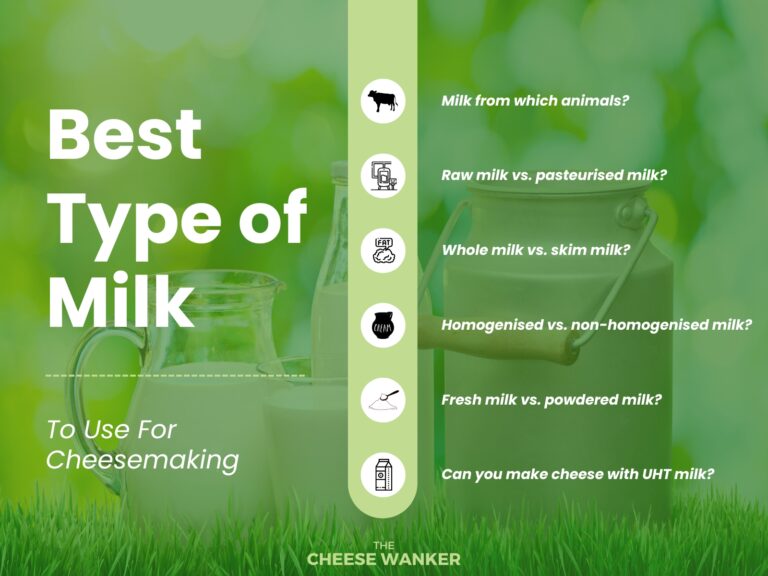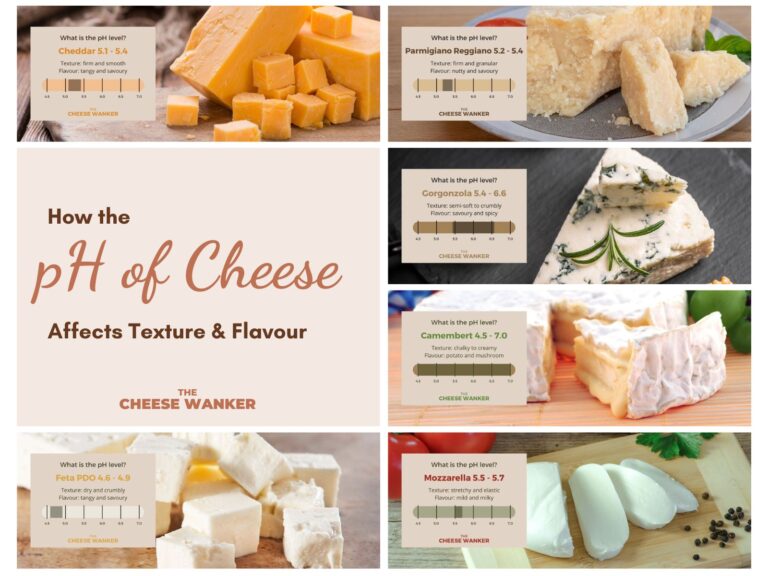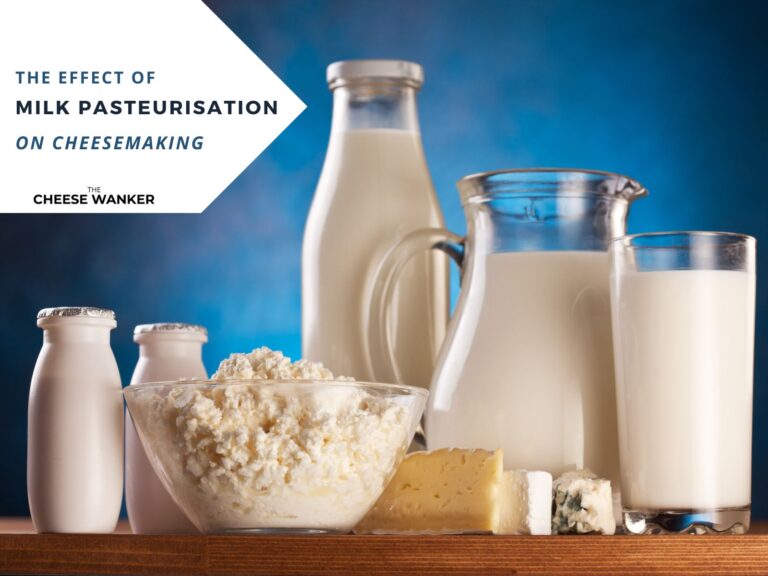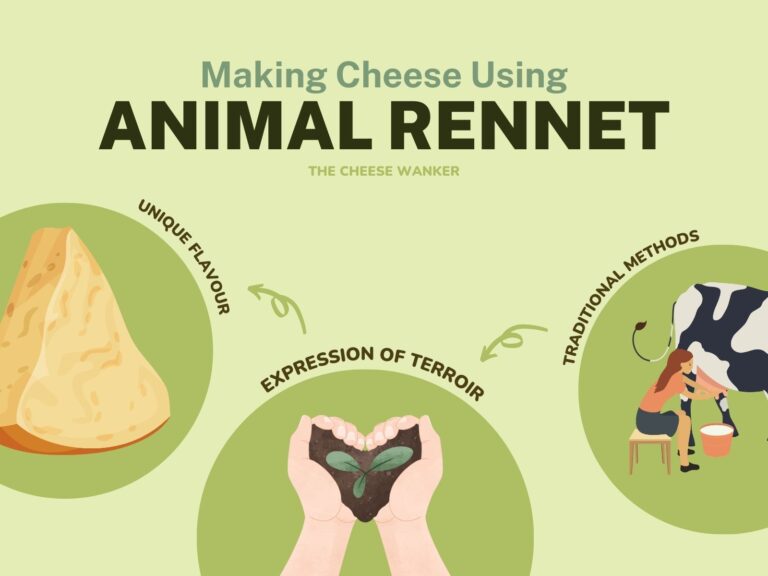Whether you’re a commercial or home cheesemaker, you will need 4 basic ingredients to make cheese: milk, starter culture, coagulant and salt. Read on to learn more about each of them.
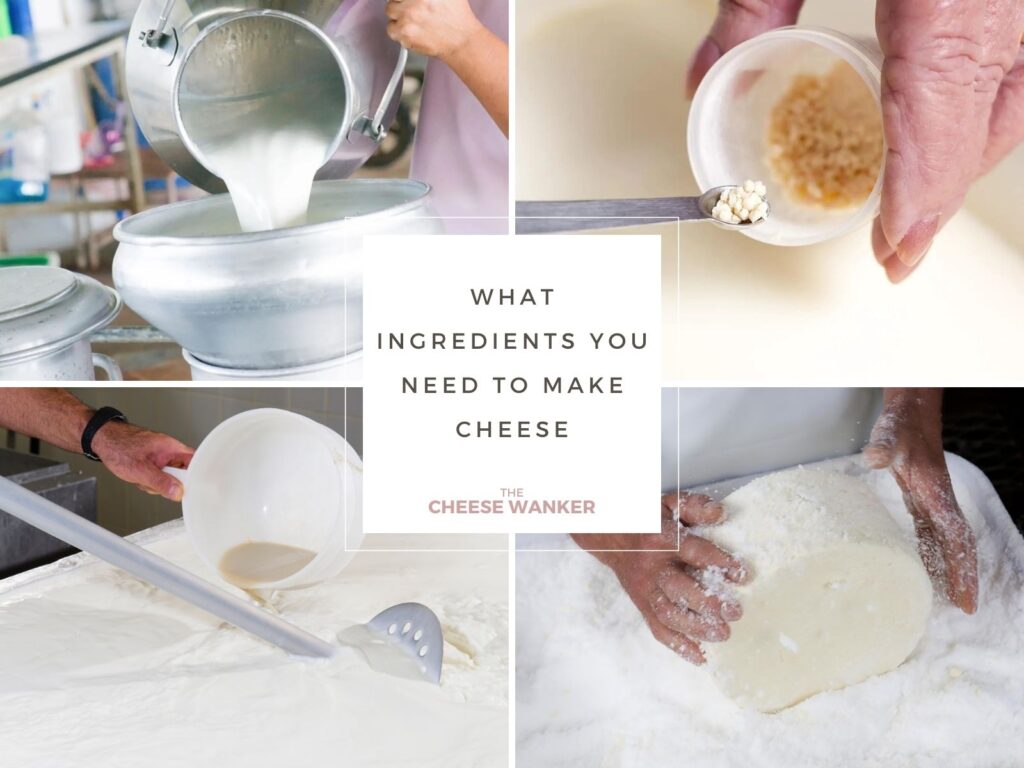
SEE ALSO: What are the different types of starter culture and where you can buy them from →
Ingredient 1 – Milk
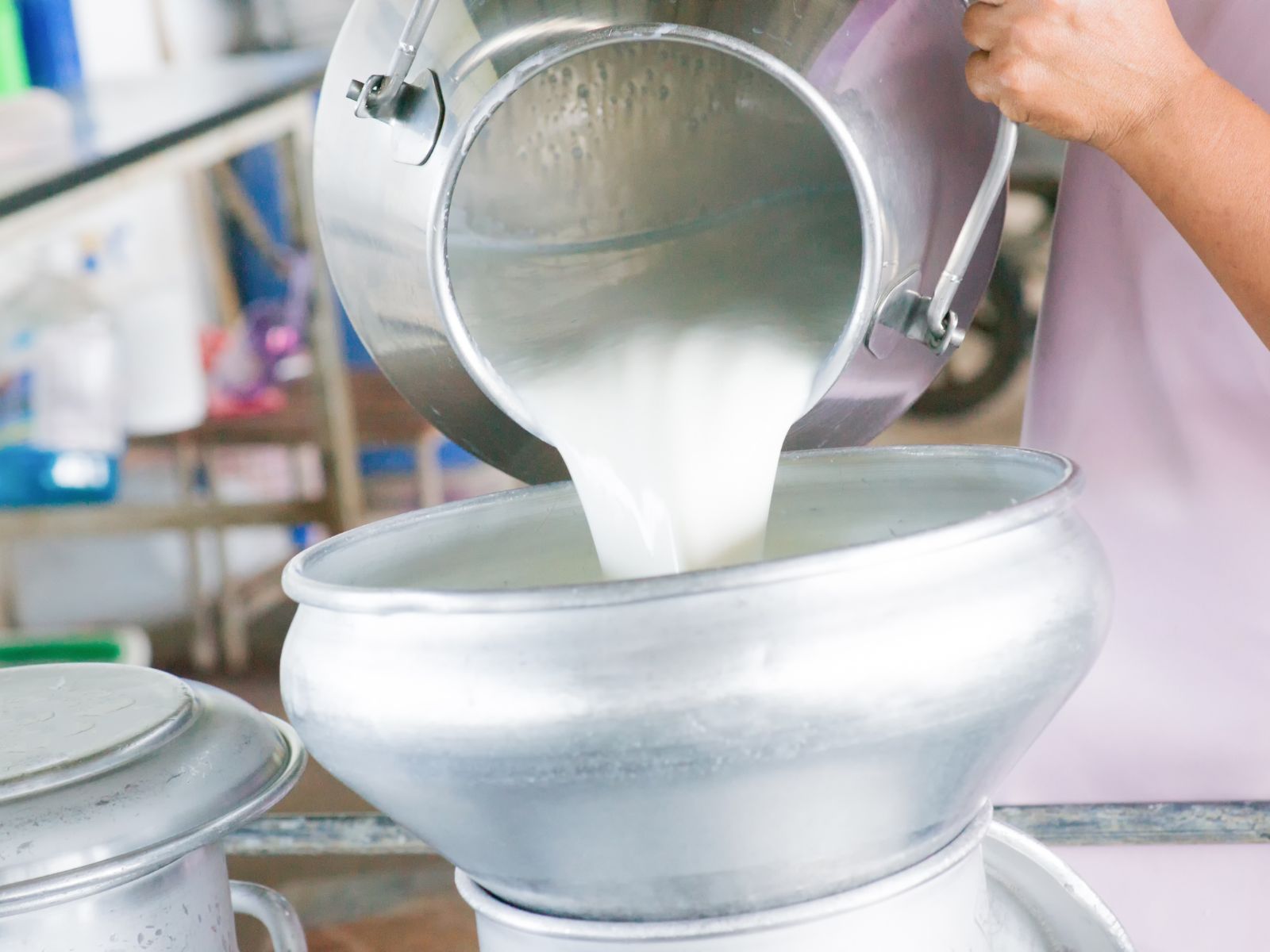
Without milk, there is no cheese. It is as simple as that! And with great milk, you can make great cheese. While the milk can be from a number of animal sources (e.g. cow, goat, sheep or buffalo), it should always be fresh.
The protein part of milk consists of casein and whey protein, and they both play an essential role in cheesemaking. But we’ll get to that a little bit later. First, let’s have a look at the different types of milk.
Raw milk
Raw milk is fresh milk straight from the dairy animal that has not been heat treated in anyway. It is typically the best type of milk to use in cheesemaking because it is rich in natural microflora. Indeed, this bacterial diversity is unique to the region where the animals are raised. As a result, you can make a cheese that celebrates your local terroir.
However, the utmost care is required when using raw milk to make cheese. Indeed, harmful rogue bacteria can easily contaminate the milk if it isn’t handled in the appropriate manner. Unless you have complete confidence that your source has maintained the highest standards of hygiene and sanitation, it might actually be safer to use pasteurised milk.
READ MORE: Why raw milk is best for cheese making →
Pasteurised milk
So, what is pasteurisation? Pioneered by Louis Pasteur, pasteurisation involves heating milk to around 70°C or 160°F for 15 seconds. Pasteurisation of milk removes all bacteria, the harmful and the good. While this process makes milk safer to drink, it does lead to a certain loss of identity.
Pasteurised milk has most commonly used in cheesemaking in north America and Australia since the industrial revolution. However, we are now starting to see a movement back to more traditional, small batch cheesemaking using raw milk.
Plant based
Finally, let’s make a quick pit stop at plant-based “milks”. We’re seeing more and more plant-based (vegan friendly) cheeses appearing in the market place all around the world. Some examples of “milks” that are being used to make these types of “cheese” include cashew, almond and aquafaba (chickpea brine).
While there have been some significant advancements in this field, the end products are most of the time a far cry from what we expect cheese to look like and taste like.
Ingredient 2 – Culture
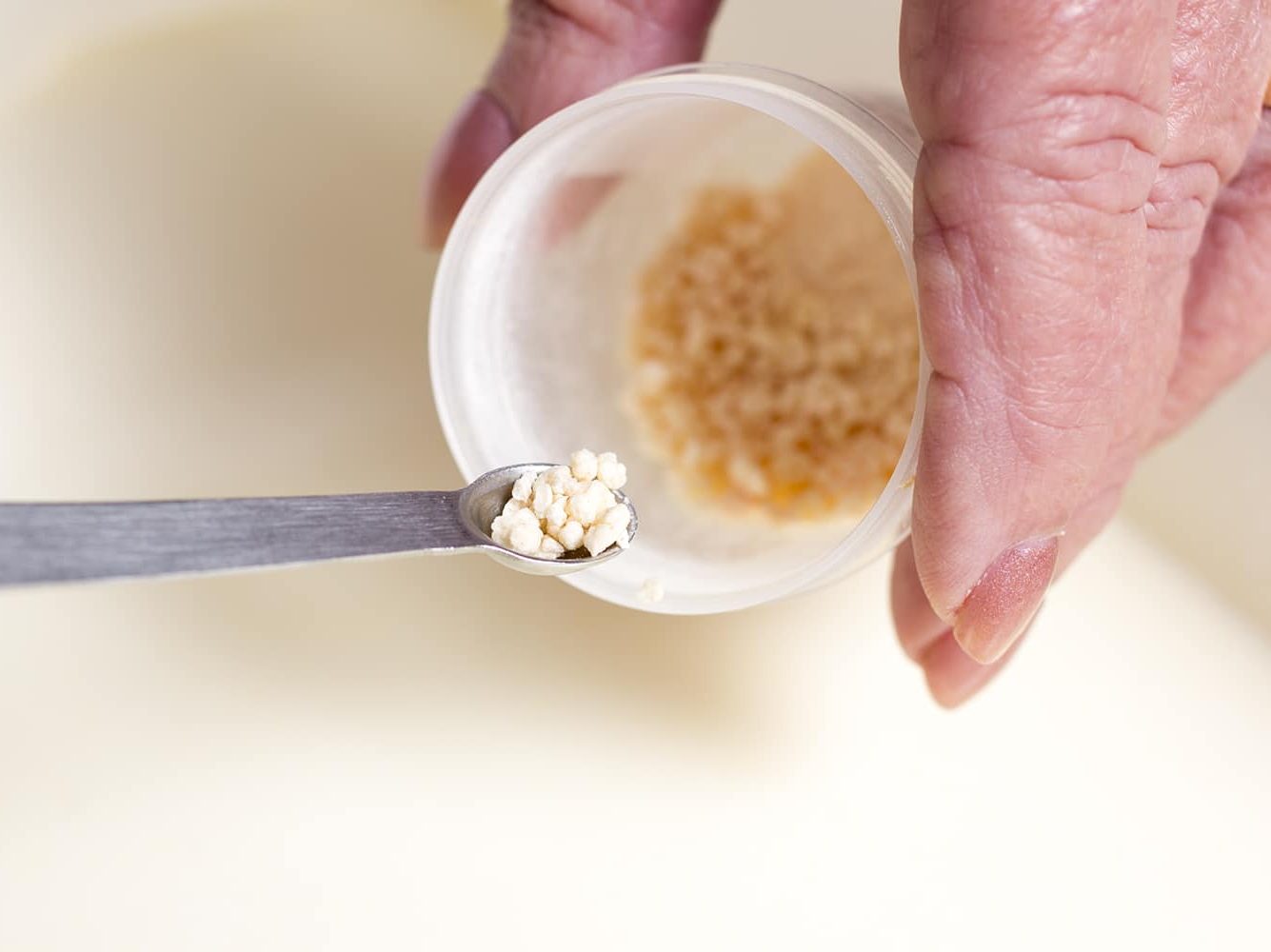
Starter cultures are friendly bacteria that help “ripen” milk by increasing its acidity. Cultures carry out their role by converting the lactose in milk into lactic acid to kickstart a number of processes. Overall, this step dictates the moisture and mineral content of the resulting curds. Also, it plays an important role in defining the taste, texture and personality of the finished cheese.
The cultures used in cheesemaking fall largely under two categories: mesophilic and thermophilic. As their names indicate, the main difference between them is how they react to high temperatures. Mesophilic cultures do their work at low heat, and are actually destroyed at higher temperatures. On the other hand, thermophilic cultures are only activated at higher temperatures, where they not only survive, but actually thrive.
Specific cheese recipes from around the world require specific cultures to be added to the milk, at specific temperatures. It is absolutely critical that you use the appropriate culture, and get the milk to the correct temperature before adding the culture in.
READ MORE: Our complete guide to cheese starter cultures →
Ingredient 3 – Coagulant
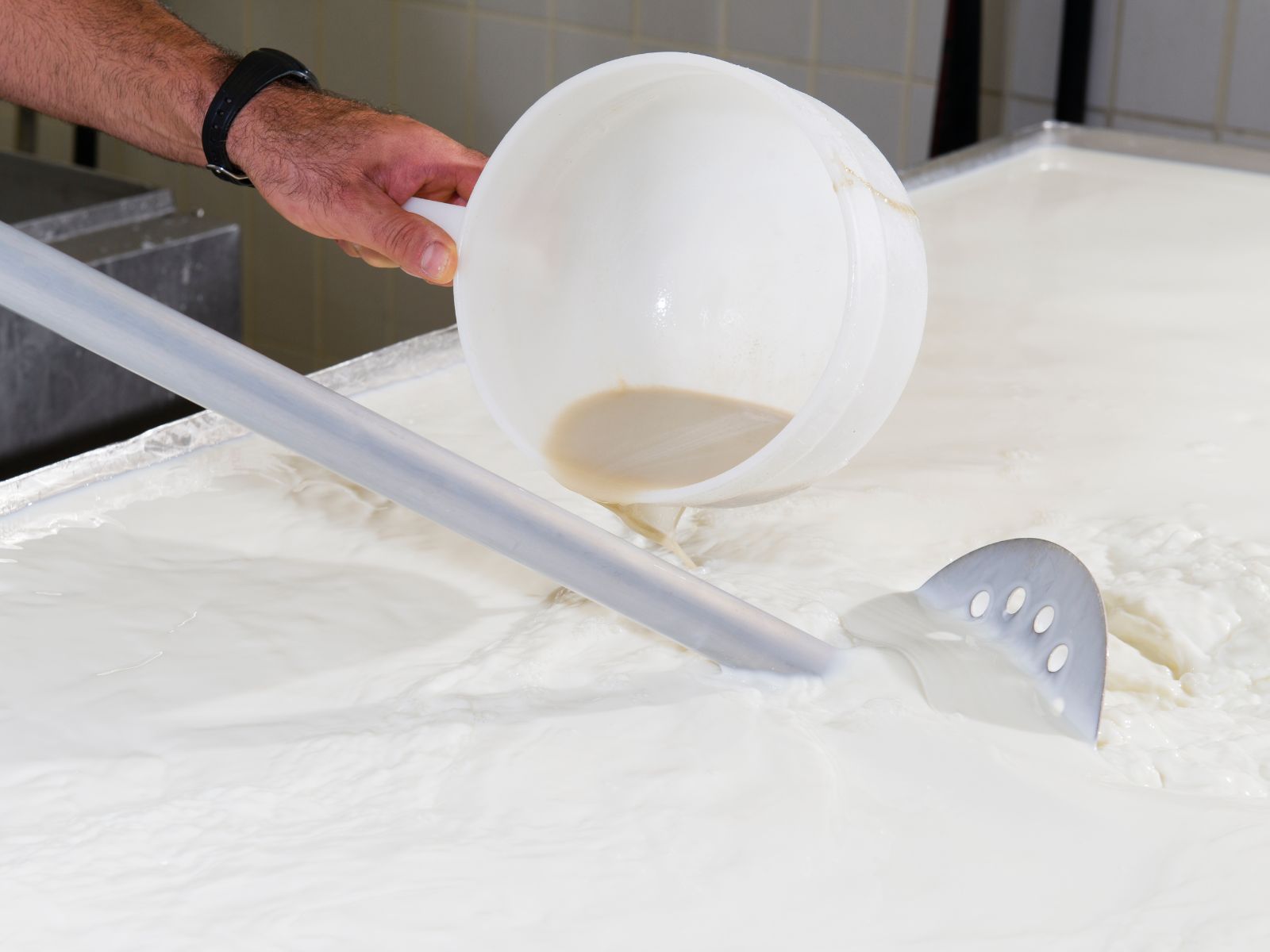
Rennet is responsible for what is arguably the most important phase of the cheese-making process: coagulation. Curds can form with just a combination of milk, heat, and acid.
However, the addition of enzymes allows cheesemakers to control the milk’s “spoilage” more effectively and, therefore, the taste and structure of the resulting cheese.
At a very basic level, rennet is a set of enzymes with coagulating properties. The enzymes work to denature milk’s casein proteins and make them less water soluble. This causes the proteins to bond together into lattice-type structures and trap fat globules. As a result, they separate into curds, leaving behind watery whey.
Overall, there are three general sources of rennet: animal, plant-based and microbial.
READ MORE: The different types of rennet used in cheesemaking →
Ingredient 4 – Salt
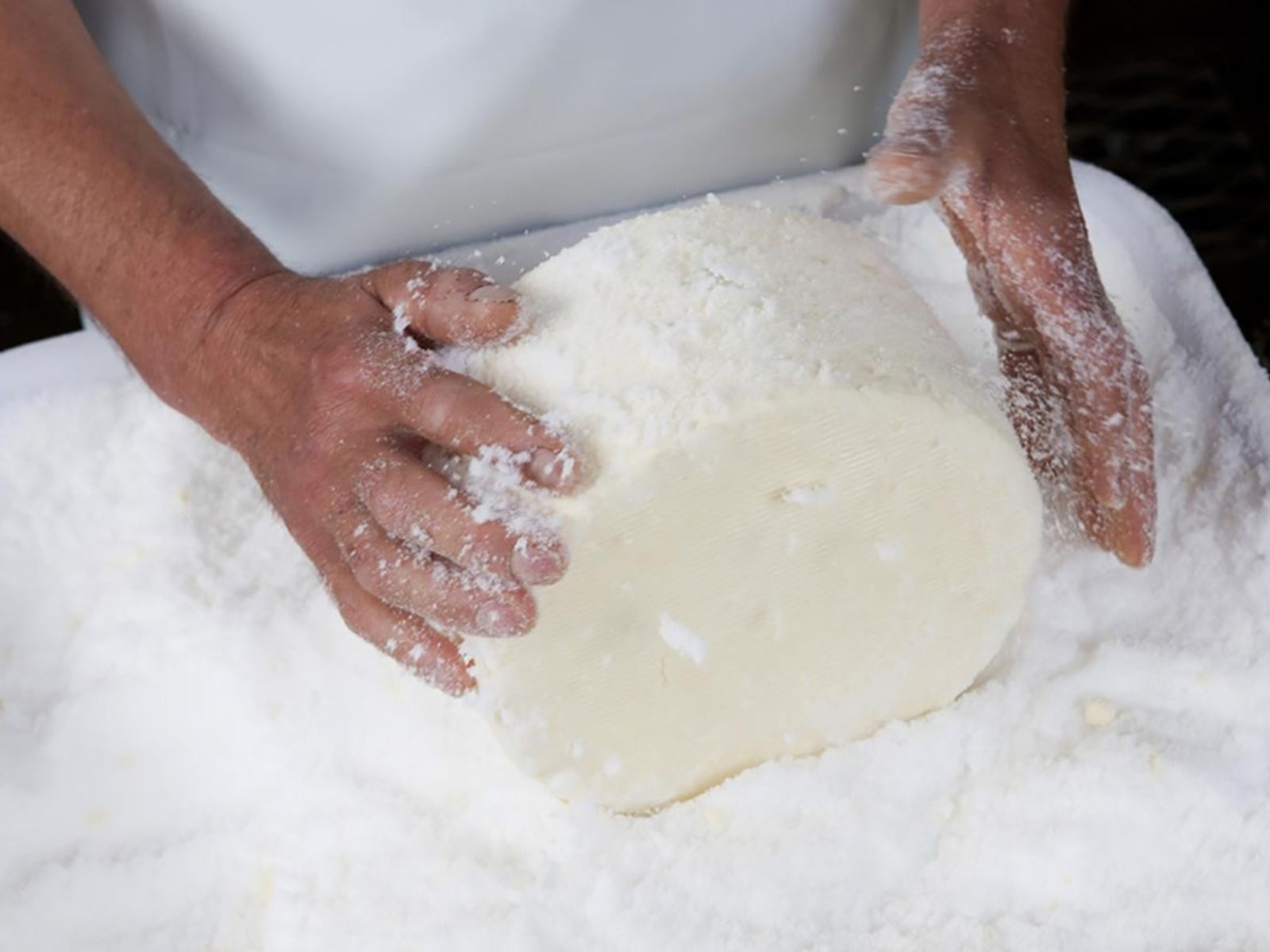
Without a doubt, salt is an essential ingredient in cheesemaking. Obviously, it adds flavour. But, the reasons why cheesemakers add salt to their cheese go well beyond that.
Firstly, salt assists in drying the curds during the draining process. Effectively, it helps separate more whey (liquid) from the curds (solids). As a result, the curd comes smaller and drier.
However, the main reason why cheese is salted is to slow down the bacterial culture and control the process by which lactose converts into lactic acid. This gives the cheesemaker more control over the maturation of the cheese.
In addition to this, salt assists in natural rind formation and inhibits any potentially harmful bacteria and fungi when used as a brine wash or bath.
READ MORE: The different ways that cheesemakers use salt →
Optional ingredients
Now that we’ve covered the four basic ingredients you need to make cheese, let’s have a look at some additional ingredients you can also use. Some of those are optional if you want to add a bit of character to your cheese. And others are alternatives to the traditional four.
Acids
There is a category of cheese called acid-set cheese that does not require the use of rennet. Instead, the milk is “soured” by the addition of an acidic ingredient such as lemon juice or vinegar. They also bring about the conversion of lactose in the milk to lactic acid.
Two common acids that fall under this category are citric acid and tartaric acid. Actually, both are naturally derived and aid in the process of lactic acid development in cheesemaking. In Italy, citric acid is commonly in recipes for Ricotta and a quick 30-minute Mozzarella. Meanwhile, tartaric acid can be used when making Mascarpone.
Colouring
Love a bit of colour in your food? There are a number of natural dyeing agents that can be used in cheesemaking. Effectively, some famous cheeses such as England’s Red Leicester and Shropshire Blue are made using a natural plant extract called annatto. Some other examples include the green Sage Derby (coloured with spinach leaves) and purple Gouda (made with lavender).
READ MORE: The world’s most colourful cheeses →
Herbs & Spices
Herbs and spices are a common addition to fresh and soft cheeses. Some great examples here include herbes de Provences, chives, pepper, parsley, garlic, dill and sage. As a matter of fact, those ingredients can add a bit of character to very mild cheeses. Some examples from around the world include America’s Pepper Jack, Spain’s Pimenton Ibores and France’s Garlic & Herb Boursin.
Calcium Chloride
Remember how we talked about the effect of pasteurisation on microflora? Well, one other detrimental impact of this heat treatment is the depletion of the calcium in milk. And calcium plays an essential role in curd formation.
One way to partially offset this is to add back Calcium in the form of liquid Calcium Chloride. The Calcium Chloride rebalances the calcium content of the milk and will speed up the formation of a firmer curd after adding rennet. This is particularly relevant if you’re using pasteurised and homogenised milk. However, it can also be helpful when making hard cheeses using goat’s milk.
Ash
Otherwise known as activated charcoal, vegetable ash is a food grade charcoal. When applied to the rind of a soft cheese, it helps neutralise acid levels and speed up the drying time. Subsequently, it encourages proper mould growth on the cheese’s rind. Ash is most commonly used on soft ripened French goat cheeses such as Valençay, Selles sur Cher and Sainte-Maure-de-Touraine.
READ MORE: The history of using ash in cheesemaking →
Have you ever made your own cheese?
Thank you for reading our post on the ingredients that you need to make cheese. Have you ever tried to make your own cheese at home? We’d love to hear from you. Drop us a comment below to share your experience.
